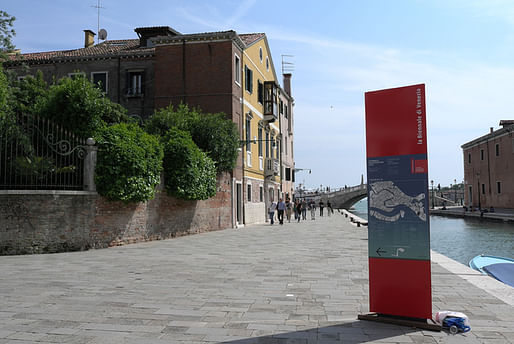
May 25, 2016:
At La Biennale Architettura di Venezia, architecture packages itself for a global forum. It is a distinct occasion through which the world’s constructs and place-makings converge in a single microcosm. Against the backdrop of a sinking city, designers and works tapped to represent national architectural accomplishment invoke a comparative sizing-up. In displays, with ceremony, at a flurry of events and celebrations, architecture gets to sift through its disciplinary priorities. This gathering of architectural seeing and being seen is significant for the scene it projects into the expanded field.
This year, the 15th International Architecture Exhibition, the tone to the official introductory texts suggests a dissatisfaction with past performances. Paolo Barrata, Biennale President, announces the 2016 show with an identification of tendency in those previous years to “deplore the present” as “characterized by increasing disconnection between architecture and civil society.” Chosen as this Biennale’s Curator to remedy the perceived lack, 2016’s Pritzker Prize-winner Alejandro Aravena set the current unifying direction with his theme, REPORTING FROM THE FRONT.

Aravena asks architecture to give a damn – about others. He extends his personal interest in building as a channel to the improvement of lives into a prompt for the promotion of architectures on the edge and reaching out. He charges this Biennale with opening up, both architecture and its exhibition practices. He is cultivating a momentum for architectures redefined by extenuating circumstance, contaminated by culture, economy, environment, politics, etc.
The call to broader engagement is not unfamiliar. It is one end of a recurring pendulum swing – between architecture, the canon, and architecture, as service – that pervades the architectural academy’s self-appreciation discourse. The push to the extroverted extreme at the scale of the architectural discipline’s premiere observance, however, is unusual. And, it begs a range of questions: How are participants not only responding to, but perceiving, the appeal for inclusive and participatory architecture? What are the implications and (by)products of seeking such architectural and project diversity? How are installation experiences influenced by social consciousness?
There are inklings of responses to these ponderings in the pre-opening releases of the national or pavilion teams. The United States, in addition to a descriptive website, shares their internal debates leading up to and through their “The Architectural Imagination” submission, in a three-part series of Vimeo videos. Canada, Germany, and New Zealand, for example, give previews through dedicated websites. And, most nations – Britain and Denmark, notably – have content available through their sponsors.

The real story, however, waits in the live, finished contributions. This text kicks-off what, over the next few days, will become a small collection of documentary bursts, rapid reviews, and preliminary digestions of the opening days of the 2016 Biennale. These flavor samples will attempt to recognize the components that try to answer the bigger issues. Or, perhaps, they simply will uncover better questions. The intent is to compile a mix of leads and perspectives that might assist with the processing that can only unfold through time, distance, and numbers.
2 Comments
With respect, many (if not most) architects do give a damn. What's needed (more than another elite party in Venice, though it does look especially good this year with more social-craft oriented work) is a mass media movement to reestablish architecture in the public mind.
Agree, LiMX.
Block this user
Are you sure you want to block this user and hide all related comments throughout the site?
Archinect
This is your first comment on Archinect. Your comment will be visible once approved.